A multi foreign currency transactional account in The EU that is denominated in a currency other than the European EUR currency is referred to as a foreign currency account in The EU. Deposits held in foreign currencies in The EU are not protected by any of the European deposit insurance programs. When you are physically present in a different country to The EU, you can start the process of opening foreign currency accounts. Alternatively, you can easily open a foreign currency account in The EU over the internet, if that is how that institution handles new account openings. The best EU foreign currency account for your needs is one that allows you to keep money from your home country (The EU). When choosing a European foreign currency account, make sure that you choose one from a reputable bank that follows international regulations and has a solid capital base. Some European foreign currency accounts allow you to deposit unlimited amounts into your account, while others have fees associated with international money transfers. Make sure you understand the fees before you sign up for a foreign currency account in The EU.
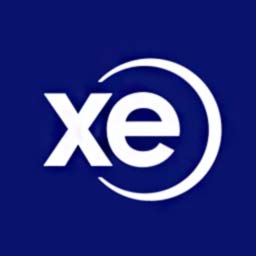 Visit XE Money Transfer
Visit XE Money Transfer
Used By: 280000000
Currencies Available: 76
Transfer Fees: none
Payment Methods: Bank transfer, credit card, debit card
iOS App : yes, Android App : yes
LiveChat:
Min Transfer: US$1.00
Max Transfer: US$500,000.00 (or equivalent)
Year Founded: 1993
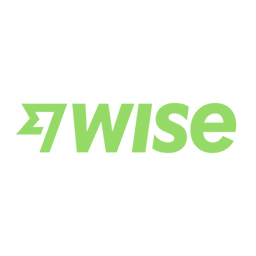 Visit Wise Multi-Currency Account
Visit Wise Multi-Currency Account
Used By: 11000000
Currencies Available: 54
Transfer Fees: 0.5%-1%
Payment Methods: Bank transfer, debit card, credit card, SOFORT transfer
iOS App : yes, Android App : yes
LiveChat:
Min Transfer: 1 USD
Max Transfer: 1000000 USD/transaction/day (personal), 3000000 USD/transaction/day (business)
Year Founded: 2011
 Visit Remitly
Visit Remitly
Used By: 3000000
Currencies Available: 63
Transfer Fees: 0-3.99$
Payment Methods: Bank transfer, credit/debit card
iOS App : yes, Android App : yes
LiveChat:
Min Transfer: US$1.00
Max Transfer: US$20,000.00
Year Founded: 2011
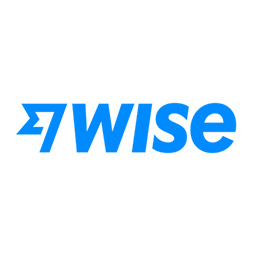 Visit Wise Business
Visit Wise Business
Used By: 11000000
Currencies Available: 55
Transfer Fees: 0.5%-1%
Payment Methods: Bank transfer, debit card, credit card, SOFORT transfer
iOS App : yes, Android App : yes
LiveChat:
Min Transfer: 1 USD
Max Transfer: 1000000 USD/transaction/day (personal), 3000000 USD/transaction/day (business)
Year Founded: 2011
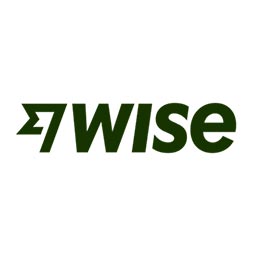 Visit Wise
Visit Wise
Used By: 11000000
Currencies Available: 54
Transfer Fees: 0.5%-1%
Payment Methods: Bank transfer, debit card, credit card, SOFORT transfer
iOS App : yes, Android App : yes
LiveChat:
Min Transfer: US$1.00
Max Transfer: US$1,000,000 (varies based on currency)
Year Founded: 2011
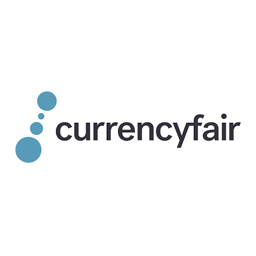 Visit CurrencyFair
Visit CurrencyFair
Used By: 150,000
Currencies Available: 17
Transfer Fees: 0.45%
Payment Methods: Bank transfer, debit card
iOS App : yes, Android App : yes
LiveChat: yes
Min Transfer: £5.00 (or equivalent)
Max Transfer: £10,000,000.00 (or equivalent)
Year Founded: 2009
 Visit InstaReM
Visit InstaReM
Used By: 130000000
Currencies Available: 11
Transfer Fees: 0%-1%
Payment Methods: bank transfer, POLi payment (Australia), debit card (EU residents), ACH Pull (US residents), FPX (Malaysian residents)
iOS App : yes, Android App : yes
LiveChat: yes
Min Transfer: $1 (minimum sending amounts could differ based on certain currency pairs)
Max Transfer: No limit (different countries have regulatory limits on outward and inward flow of remittances originating from or to the country)
Year Founded: 2014
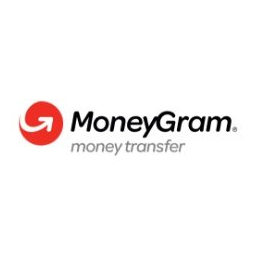 Visit MoneyGram US
Visit MoneyGram US
Used By: 150000000
Currencies Available: 46
Transfer Fees: 0-1.99$
Payment Methods: pay by card or directly from your bank account
iOS App : yes, Android App : yes
LiveChat:
Min Transfer: none
Max Transfer: 3000 USD
Year Founded: 1940
 Visit Xoom
Visit Xoom
Used By: 250000000
Currencies Available: 4
Transfer Fees: 0$-40$
Payment Methods: Bank transfer, debit/credit card, PayPal balance
iOS App : yes, Android App : yes
LiveChat: yes
Min Transfer: US$10.00
Max Transfer: 2999 USD/day, 6000 USD/month, 9999 USD/3 months
Year Founded: 2001
 Visit Skrill
Visit Skrill
Used By: 120,000
Currencies Available: 33
Transfer Fees: none
Payment Methods: Cash, bank transfer, debit card, credit card, e-wallet, cryptocurrency (depending on country)
iOS App : yes, Android App : yes
LiveChat: yes
Min Transfer: US$1.00 (varies based on certain currencies)
Max Transfer: US$2,500.00 / day (weekly and monthly limites also apply)
Year Founded: 2001
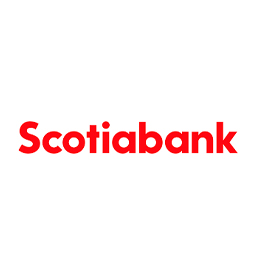 Visit Scotiabank
Visit Scotiabank
Used By: 25,000,000
Currencies Available: 23
Transfer Fees: none
Payment Methods: Bank transfer, debit card, credit card, apple pay, google pay, Scotiabank Saddletone gift cards
iOS App : yes, Android App : yes
LiveChat: yes
Min Transfer: none
Max Transfer: 10000 USD
Year Founded: 1832
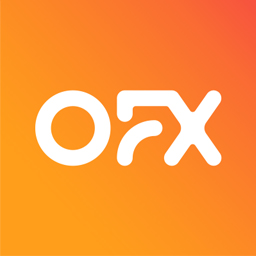 Visit OFX
Visit OFX
Used By: 1000000
Currencies Available: 54
Transfer Fees: 15 AUD below 10k AUD
Payment Methods: ETF, BPAY (Australia), Direct debits
iOS App : yes, Android App : yes
LiveChat: yes
Min Transfer: 1000 USD
Max Transfer: none
Year Founded: 1998
 Visit Credit Suisse
Visit Credit Suisse
Used By: 1000000
Currencies Available: 1
Transfer Fees: none
Payment Methods: eBill, QR-bill, standing orders, payment orders, online & mobile banking, direct debit, multi-payment orders, bank transfer, debit card, credit card
iOS App : yes, Android App : yes
LiveChat: yes
Min Transfer: none
Max Transfer: none
Year Founded: 1856
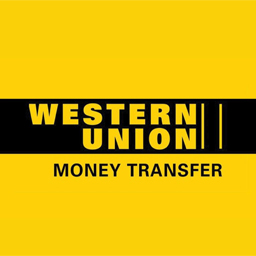 Visit Western Union
Visit Western Union
Used By: 15000000
Currencies Available: 38
Transfer Fees: up to 3%
Payment Methods: Cash, bank transfer, debit card, credit card (varies from country)
iOS App : yes, Android App : yes
LiveChat:
Min Transfer: $1.00
Max Transfer: $10,000.00 (varies)
Year Founded: 1851
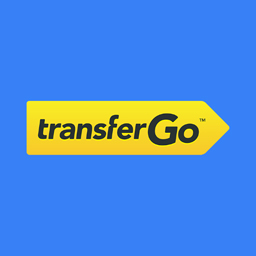 Visit TransferGo
Visit TransferGo
Used By: 2,500,000
Currencies Available: 39
Transfer Fees: 0.5%-1.5%
Payment Methods: Bank transfer, debit card, credit card
iOS App : yes, Android App : yes
LiveChat: yes
Min Transfer: 1.5 GBP
Max Transfer: 1000000 GBP
Year Founded: 2012
 Visit Moneycorp
Visit Moneycorp
Used By: 15000000
Currencies Available: 161
Transfer Fees: none
Payment Methods: debit card via our online platform or a wire transfer, cash
iOS App : yes, Android App : yes
LiveChat:
Min Transfer: 50 USD/GBP/EUR
Max Transfer: none
Year Founded: 1962
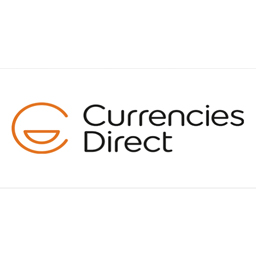 Visit Currencies Direct
Visit Currencies Direct
Used By: 325,000
Currencies Available: 22
Transfer Fees: none
Payment Methods: Bank transfer, debit card
iOS App : yes, Android App : yes
LiveChat: yes
Min Transfer: none
Max Transfer: 25000 GBP
Year Founded: 1995

A global currency account may have a similar fee structure as a standard EU bank account. There are withdrawal, open, and transfer fees, and they may vary. To determine your exact fees, contact the EU bank's customer service representatives. Most international banks have user-friendly systems that are familiar to other EU bank account users. They are easy to use, so even beginners can find them easily.
A multi-currency account protects your wealth from local disturbances and fluctuations in The EU foreign exchange rates. Having an account in more than one currency reduces your exposure to EU foreign exchange rates, EU foreign transactions, and conversion fees. Furthermore, you can simplify the process of opening a bank account with a multi-currency account.
.A EU foreign currency account is a great option for people who need to send money abroad and need to receive receipts in that currency. EU foreign currency accounts pay interest on selected currencies, and some offer tiers of interest, with higher interest rates going to larger balances. Other institutions offer EU foreign currency accounts that let you deposit or withdraw money in the currency of your choice without incurring fees.
Multi-currency accounts are an excellent option for businesses that travel frequently or earn income in a currency other than USD. They allow you to hold multiple currencies in a single account, which is extremely beneficial for international trade and business. EU foreign currency accounts also help you track your EU foreign exchange gain and loss, which can help you manage your international business better. You can also open one with the bank of your choice and send funds to your customers in their own currency.
A EU foreign Currency Account is a European currency checking account that is able to hold currency in addition to the European EUR. To open a EU foreign currency account, you must verfiy your account. This will mean proving your ID and address with a government issued ID and a utility bill sent to your address in the The EU. gather the necessary personal and financial information. You can apply for an account online or by phone. Some traditional European banks offer online accounts that are able to accept multiple currencies like USD GBP, EURO but you will be charged expensive currency conversion fees. Traditional bricks and mortar banks may require that you visit a branch to setup a foreign currency account in The EU. Its far easier to open an European foreign currency account online, with many of the regulated money services that operate in The EU. Regardless of the method of application, a EU foreign Currency Account is a valuable asset for European nationals who live abroad or conduct business with international clients.
EU foreign currency accounts simplify your monthly accounting by eliminating the need to hold multiple accounts. It also makes receiving international payments faster and easier in The EU. While you may be tempted to open a EU foreign currency account, you should consider its costs and benefits before signing up. EU foreign currency accounts may have fees for overdraft, special cash handling, or other fees when handling multiple non European currencies. Make sure to choose a bank or online international money service in The EU that offers the lowest fees, but be prepared to maintain a minimum balance of the currency you wish to purchase.
A multi currencies Account is a convenient way for European clients to accept payments in different currencies. All you need to do is provide the European banking details and the amount to open an account. Accepting payments in multiple currencies helps European clients compete better with international competitors. International customers appreciate the ability to pay in their own currency to European clients and foreign currency accounts in The EU help to manage risk. The FX market is notoriously volatile for European clients who transact in various global currencies, and the fluctuating exchange rate can increase your costs in The EU.
A EU multi-currency account may be accessed through branches of a bank abroad, but the number of currencies it supports will be limited by the payment network the European bank has set up. The majority of European banks and online money services cover a variety of currencies, including the UK Sterling (GBP), European Euro (EURO), US Dollar, (USD) and Canadian Dollar (CAD), Japanese Yen (YEN) and Australian (AUS). The constant exchange rate fluctuations can negatively impact your account balance. A EU multi-currency account may be beneficial for European clients if you need to conduct business abroad, but it's also important to find a online foreign currency account that can offer you the flexibility you need in The EU.
A EU foreign currency account allows you to make international payments and receive receipts in the currency of your choice. For example, a European importer might open a EU foreign currency account and buy a currency foreign to the EUR at a good rate and hold it in escrow until the date of payment. This way, the European importer is able to lock the EUR exchange rate, allowing them to make payments in their home EUR currency without incurring additional exchange fees.
You can open a EU foreign currency account through any of the major European banks, or signup for an online money transfer service that offers multicurrency accounts in The EU, including online banking and personal financial services for European clients. To open a European foreign currency account, gather a proof of address and photo ID documents. Some money services and banks in The EU allow you to open your foreign currency account online, while others may require you to physically visit a European store. In either case, it's worth considering a European EUR foreign currency account. It can help you save money while transacting in multiple currencies for example if you are a European international business person or are living abroad. A foreign currency account in The EU can benefit you when dealing with EU foreign clients that need to be paid.
While the major EU banks typically offer few options for a EUR foreign currency account, some alternative European banking providers offer foreign multicurrency accounts at very competitive rates. A European foreign multicurrency account is designed for those who wish to hold, send, and spend different currencies including the EUR. It will let European clients make purchases in the international currencies they wish to use. This type of foreign multi currency money account in The EU is ideal for people who travel frequently and need to keep their funds in several currencies in addition to the European EUR.
While there are several factors to consider when choosing a European foreign currency account provider in The EU, the most important is that the foreign multi currency account in The EU offers you convenient cross-border transfers. Make sure to check if the international money service in The EU offers fee-free global transfers and supports SWIFT. Also, be sure to find out whether the EU foreign currency account you are considering provides overdraft protection to European clients. European clients dealing in multiple currencies can use an overdraft facility to meet unforeseen expenses or avoid financial risks.
You should record European and international foreign currency transactions as income or expense, depending on which currency you use. It is important to note that different types of currency have different accounting standards in The EU, so you should check to see which one will be the most appropriate for your European and international business. The European EUR currency rate will impact your accounts payable and accounts receivable. For your accounting records, you should record the gain or loss as income or expense in The EU.
You should also consider your international expansion plans and the exchange rate risks associated with European foreign currency transactions. Depending on your type of business, you might consider hiring a bookkeeping service or engaging a European tax professional in The EU. Your European accountant can provide guidance and advice on your European foreign currency international operations tax situation and help you find ways to mitigate EU foreign exchange risks. If you're considering expanding to new markets, EU foreign currency transactions are a critical part of your international strategy.
While the major EU banks typically offer few options for a EU foreign currency account, some alternative banking providers in The EU offer a wide range of foreign currency accounts. Online foreign multi currency accounts in The EU, are accounts designed for those who wish to hold, send, and spend different currencies including the EUR. European foreign multi currency accounts will let you make purchases in almost any currency you wish to use. This type of account is ideal for European people who travel frequently and need to keep their EUR funds in several currencies.
A EU foreign currency account allows European clients to make international payments and receive receipts in any currency of their choice. For example, an European client might open a EU foreign currency account and buy the currency at a good rate and hold it in escrow until it is needed to make a payment internationally. The EUR exchange rate is locked in to the escrowed amount, allowing European clients to make payments in their home EUR currency without incurring additional multi currency exchange fees.
You can open a EU foreign currency account through any of the major banks, including online banking and personal financial services. Foreign currency bank accounts can help you save money while living abroad, or it can benefit your European business dealing with international foreign clients in The EU.
A European foreign currency fixed deposit, also known as an FCFD, is a form of time deposit that can be offered by financial institutions in The EU to European customers who wish to store foreign money for future usage or to hedge against fluctuations in the value of that currency. The EUR and foreign money that has been placed into the FCFD account is not eligible for withdrawal until the defined term that was agreed upon with the European client has run its course.
If you want to diversify your portfolio and earn interest at the same time, a EU foreign currency fixed feposit is a great option. However, there are risks associated with this type of investment for European foreign currency clients. European clients cannot withdraw their money until the term of the deposit is over. If you want to diversify your investments and reduce the risk of European foreign currency fluctuations, a foreign currency in The EU fixed deposit may be the right choice for you.
In addition to interest loss, European clients risk paying penalties for early withdrawal of your foreign currency fixed deposit account in The EU. This means that European account holders can end up paying more than you originally invested in your fixed deposit account. Therefore, it's important to understand the risks and rewards associated with foreign currency fixed deposits in The EU.
A EU foreign currency fixed deposit, or FCFD, allows you to invest your money in a EU foreign country and earn interest in the EU foreign currency. You can also use the account to bill customers in The EU foreign currencies. However, you will pay conversion costs when withdrawing the money from an FCFD account. The following are some examples of FCFDs. They are a popular form of investment and can be helpful in hedging against currency fluctuations.
A foreign currency fixed deposit accoint is a European non-resident investment accounts that allow European investors to invest and hold EU foreign currency. This type of account can be advantageous for European investors who frequently invest overseas, conduct business with oversea parties, or support overseas students.
In addition to the higher interest rates on EU foreign currency fixed deposit accounts, they also come with a host of risk factors. While you may earn better interest with these types of accounts than with traditional time deposits at your local bank, you should keep in mind that you are also risking a large amount of money. The risk involved in putting your savings in a EU foreign currency is primarily due to the exchange rate. You could lose a significant amount of money if the currency you are investing in weakens or gains in value.
A EU foreign currency fixed deposit is an excellent way to hedging against fluctuations in the EU foreign currency market. If you're a European client frequently investing overseas, conducting business transactions in The EU with overseas parties, or supporting overseas students, a European foreign currency fixed deposit account is a great way to lock in a fixed exchange rate. This way, when your home currency depreciates, your EU foreign currency fixed deposit becomes more valuable. You can invest a larger sum of money in one account to benefit from the higher interest rate.
For one, a EU foreign Currency Fixed Deposit gives the depositor more flexibility and control over the currency they deposit. The interest rate on a EU foreign currency fixed deposit is influenced by the EU foreign currency exchange rate. Countries with stable currencies have lower interest rates than those with higher volatility. Some European banks offer 0% interest rates on fixed deposits in The EU foreign currencies. This is because these European banks will convert the EUR to the foreign currency and then return it to the European depositor after a certain period. Although the EU foreign currency is expected to strengthen, European consumers can still earn some amount of money.
Another disadvantage of EU foreign currency fixed deposits is that the currency value fluctuates. While this can be beneficial for European consumers, it also introduces risk to the investment. While a Fixed Deposit pays higher interest rates than a European savings account on average, early withdrawals will result in a penalty from your European bank in The EU.
A EU foreign currency fixed deposit account in The EU is a good hedging tool against fluctuating conversation rates. These accounts are useful if you are a European client that invests frequently abroad, do business with oversea parties, or want to help your children study abroad. EU foreign currency fixed deposit accounts lock in exchange rates, so they gain in value as the value of your home EUR currency depreciates. The duration of the FCFD account is typically seven days or longer.
It can be a wise decision to open a European foreign currency account if you regularly send and receive money from abroad. You may also find it useful to receive receipts in the same currency as your money in The EU. An European importer for example often purchases currency at a good rate and holds it in the account until needed at a certain due date, with the aim of capatilising on good exchange rates. When choosing a European bank or money service for your European foreign currency account, make sure you know the minimum balance requirements for each account. Some European banks and online money services have high minimum balance requirements in The EU. In this case, European clients should avoid using your foreign currency account with less than one thousand EUR.
When choosing a EU foreign currency account, you should look for one that allows you to switch between currencies with little or no hassle. Overdraft protection is essential, and many of these European foreign currency accounts also allow European clients to maintain short-term deficits. They may also come with fees, so you should choose the best foreign currency money service with the lowest fees in The EU. Be aware that some European banks may require a daily minimum balance in your account before you can access your foreign currency account in The EU.
When using a European foreign currency account, you'll probably need access to an overdraft account. Overdrafts occur when you make a withdrawal from an account when the account balance is not enough. An overdraft is a loan from a European financial institution in The EU to help you continue paying your bills and making international transfers. You'll usually pay interest on the overdraft in The EU, and will also likely be charged a one-time insufficient funds fee which European clients must be aware of. Depending on how much money a EU account holder has, an overdraft account can cover rejected payments or bounced checks.
A EU foreign currency account is an excellent choice if you frequently transfer money to other countries. A European foreign currency account will simplify your monthly accounting by eliminating the need to have separate accounts in The EU. It will also allow you to receive and send international payments much faster than you would with a standard European current account. Although it can be helpful, be aware of fees and minimum balance requirements of foreign currency accounts in The EU. Some European banks and money services charge for overdrafts and other special cash handling. Be sure to check fees associated with your European foreign currency account. Some foreign currency accounts may have minimum balance requirements in The EU, and some have a minimum daily balance requirement for European clients.
Before opening a European foreign currency account, make sure to compare the costs of various banks and online money services. Make sure your foreign currency account is regulated by a European government financial regulator. The costs of EUR currency conversions can quickly eat up your principal, and European clients should be aware of all the fees associated with EU foreign currency accounts. To avoid incurring any unexpected costs, it's best to stick to three or five currencies including the EUR. However, you should be aware that a EU foreign currency account usually offers lower interest than a European savings account.
A EU foreign currency savings account requires a higher minimum deposit than a European savings account. Although these savings accounts may offer higher interest rates than savings accounts, you also run the risk of losing gains on currency exchange. Keeping your money in a EU foreign currency account is risky, so European clients should consider your risk tolerance before signing up for an account.
In order to open a EU foreign currency account, you must first complete an application form, providing financial and personal data. If you do not have a EU foreign bank account already, you must complete the application form online or over the phone. Foreign currency account registration and setup online will require basic personal information, including your European current address and proof of ID. You should also provide details about your typical monthly usage of EU foreign currency. During the application process, you will also be asked for some proof of identity and may be asked to complete a quick questionaire.
While opening a EU foreign currency account may be confusing, it can also save you a lot of money and protect you from exchange rate fluctuations. Managing your European money using multi-currency accounts can help you save and transfer money without any hassle. If you have a EU foreign currency account, make sure to take the time to read the money service providers terms and conditions.
You may want to choose a European bank with a low minimum for deposits. This will prevent you from being charged a fee every time you deposit and withdraw EU foreign currency. Also, if you have a large account, make sure you check whether your European bank charges for currency conversions. Some EU foreign currency accounts offer overdraft protection, but they often have fees attached. Depending on your bank in The EU, you may not get the best interest rates.
A European foreign currency account can be opened similar to a regular European bank account. To open one, you will need to provide your basic information and a offical European government issued ID. If you're planning to make a large purchase with a currency other than EUR, open a EU foreign currency account. It may be beneficial to open an account that allows you to purchase and sell European foreign currency with ease. The process of opening and maintaining a foreign currency account in The EU is straightforward and can be done through an online in most cases.
Yes, you can hold currency other than the EUR in The EU, but there are specific rules to follow when doing so. Some European banks require proof of savings or income. Others require a significant deposit. Those criteria may vary widely in The EU. Check with your European bank to determine which one applies to you. If you are a European individual, check with your European bank to see if they can offer a foreign multi-currency account in The EU. Otherwise, you can opt to open a European business account where you can hold several different currencies including the EUR.
If you're wondering how much money you can keep in European foreign accounts, you need to check and know the European tax rules. In general, the amount of money you can hold in European foreign accounts is 1,000 EUR or more. European nationals have a set allowed personal allowance set by the European tax office. You will need to check if your foreign account balance is below your allowed tax free personal allowance in The EU. Usually if the value of the account is more than 1,000 EUR, you must report the European foreign assets to the local European tax office. If you are not sure about the rules and regulations regarding foreign financial accounts in The EU, you should check with your qualified European tax adviser.
You may wonder why European banks have foreign currency. The answer varies from country to country, and can be impacted by a variety of factors, including international competition, demand for loans, and other aspects of the European banking market, globally and in The EU. For example, when you are planning a trip to Europe, Asia or the USA you will most likely have some European foreign currency in your possession after your trip, and you may decide that you want to convert that cash back to EUR. To avoid exchange rate fluctuations, you may want to use an ATM in The EU before you leave.
One of the main benefits of using a European credit card when traveling is that you will not be charged exchange fees. These fees can range from 1% to 3% of the value of your international and domestic European purchases. Using a European credit card will also save you money by avoiding currency conversion fees. However, it's better to exchange your EUR currency when paying for the purchase in the local currency. There are also many benefits to using a European credit card when traveling abroad. One of them is that it tends to offer lower EUR currency exchange rates than cash, making it much more convenient to make use of your European credit card in foreign countries.
Some banks have online European EUR currency exchange services. Some European banks offer this service, while others only offer in-person service. While you can choose a EUR currency exchange facility near your destination, you should avoid airport-based EUR banks. While they may advertise no fees and be near a tourist area, you'll typically get a less favorable EUR exchange rate. Before making a decision, do some research online or call your local European bank to compare rates.
European foreign currency accounts are available to European residents who are over the age of 18. Before you open an European foreign currency account, you must first register using a few quick personal details. You will need to provide your photo ID and proof of address. You may also be required to provide proof of income with some European banking service providers.
Some European banks offer foreign currency accounts in The EU, but they come with hefty fees. Many established foreign currency banking accounts in The EU require a minimum balance of 200,000 EUR and may charge upto 150 EUR per month. Other foreign currency accounts require European high-net-worth individuals to maintain a certain balance of 50,000 EUR per year. Because the barrier to entry can be so high for some European clients, many online money services have been able to increase their market share and offer European clients foreign currency accounts at far more competitive and accessible rates in The EU. You will be able to find an online foreign currency account with far lower fees, but keep in mind that the interest rate on a European foreign currency account is often much lower than the interest rate on a European standard savings account.
Whether you use multiple currencies in The EU for international payments or simply want to use your account to send money abroad, a European multi-currency account is a great option. While European banks make it easy to send and receive money in one currency, dealing with foreign currencies in The EU isn't as straightforward. Most European banks charge exorbitant fees, require high minimum balances, and require long transfer times. But independent European financial institutions online can offer a better solution for international payments to European foreign currency clients. Some online foreign currency accounts offer no fee monthly fee services, as well as the convenience of online accounts in The EU.
European multi-currency account is a great option if you travel a lot. Foreign multi-currency accounts in The EU allow you to send and receive money in several currencies not just the EUR. Foreign currency accounts allow European clients to manage European domestic and internationals payments and keep records with a single point of reference online. Using European multi-currency bank accounts can help you avoid currency exchange fees.
We list reviews for the best money transfer services for sending money to EU you can check out some of the best EU money services below.
If you would like to see XE Money Transfer compared against some of the best XE Money Transfer alternative EU money tranfer services available right now you can do so by clicking on the links below.